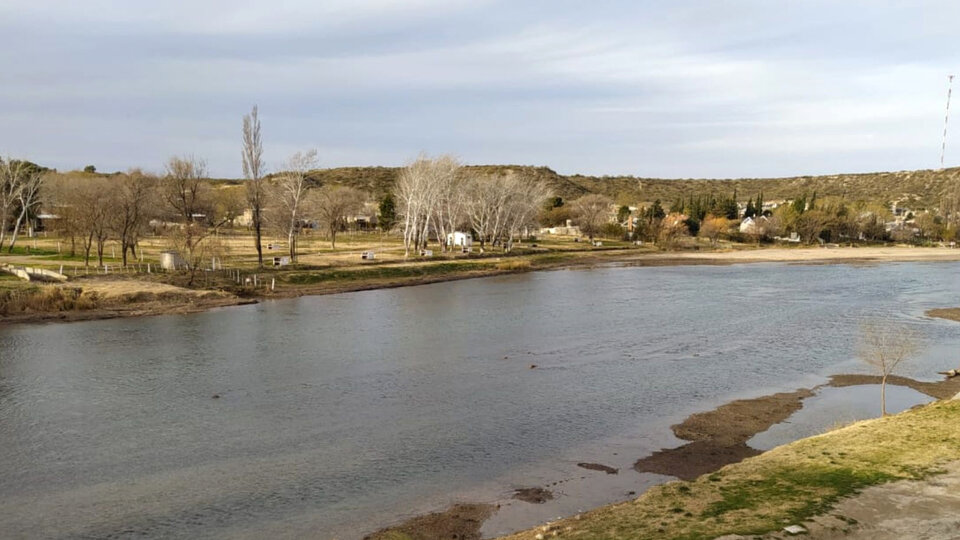A recent study recorded a 60% drop in water supplies to the Colorado River Basin. Due to water scarcity in the last 12 years, in the regions involved there is talk of a “new normal”. This river crosses Argentina from the Andes Mountains to the sea, passing through five provinces, and is vital for food production and consumption by the populations.
The information was compiled by researchers from the National Water Institute (INA), the National Institute of Agricultural Technology (INTA) and the National Space Activities Commission (CONAE) based on satellite images and in situ measurement stations. “The snow that accumulates during the fall and winter in the upper Colorado River basin is the source of water supply for this territory. shared by Mendoza, Neuquén, Río Negro, La Pampa and Buenos Aires”, explains Caroline Aumassannefrom the INTA Rural Extension Agency 25 de Maio.
Knowing the hydrology of the basin is essential to plan the use of water along its route. Agriculture represents its main use: 98 percent of its consumption is for irrigated crops. The largest development is located in the Buenos Aires Valley, with an area of 78,000 hectares, followed by the province of La Pampa, with 12,000 hectares.
“It is essential to generate qualified information to know how much it snows, when the melting starts and what volume of water we will have during the year“, says Ana Paula Salcedoresearcher at the INA Andean Regional Center.
a new flow
The Colorado River has, according to the historical average, an annual leakage (amount of water) of 4,400 cubic hectometers (Hm3). However, in the last 12 years, leaks below average were recorded, between 1,600 and 3,600 Hm3. Last time, it showed a drop ranging between 40 and 60 percent. Added to the drop in water supply is the growth in agricultural production and population across the basin, which represents a greater demand for water.
INTA has been working on this issue since 2013, meeting the demands of the territory and with the aim of generating knowledge about hydrology throughout the basin. In 2021, the first lines of investigation were carried out in cooperation with the INA. “We are making progress in updating the precipitation and flow databases and we are evaluating their annual and interannual variations with information from meteorological and hydrological stations”, says Salcedo. He adds: “Furthermore, We began using optical and satellite radar data to estimate snow cover parameters in the upper river basin”.
Then, they called CONAE to develop lines of work with satellite information, interested in aggregating data provided by the radar of Argentine SAOCOM satellites. Romina Solorza, a professional from CONAE’s Earth Observation Management, details: “We were able to reconstruct historical information scenarios, with very interesting results. For example, we found that since 2010 the Colorado River basin has a new discharge lower than its historical average”. Knowing this situation allows planning the sustainable use of water from this new level.
more accurate information
Unlike measurement stations located on the ground, satellites obtain pixel-by-pixel information from the entire study area. “At INTA we had been working with satellite images from the MODIS sensor, which allowed us to know the state of the snow every eight days, with a pixel of 500 meters. The information provided by CONAE provides us with a much greater spatial and temporal resolution, generating objective and qualified information in almost real time.”, highlights Aumassanne.
Satellite information is corroborated with data from meteorological, flow and snow stations, located more than 2,500 meters above sea level. However, the advantage of satellites is that, while each station provides data from a specific location (there are only four snow stations spread over a basin of 13,900 km2), the SAOCOM radar image allows you to cover the entire area and determine where the snow melting process begins.
“The SAOCOM data gives us information about the moisture content in the snow pack in the spring months to know the date when the melting process starts and, based on this data, infer the moment when water will be available in rivers”, says Salcedo.
Nowadays, The work is focused on the design of mathematical models and machine learning technologies to integrate the information provided by satellites and stations to estimate flows.. For this, they have the collaboration of the School of Geosciences at the University of Edinburgh, in Scotland. For the future, They also intend to incorporate the study of climate change scenarios and the impact on regional hydrology.

